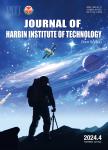Spray Characteristics of Non-Circular Nozzle in Air-Assisted Injection System
作者机构:School of Automotive and Traffic EngineeringJiangsu UniversityZhenjiang 212013JiangsuChina School of Agricultural EngineeringJiangsu UniversityZhenjiang 212013JiangsuChina
出 版 物:《Journal of Harbin Institute of Technology(New Series)》 (哈尔滨工业大学学报(英文版))
年 卷 期:2023年第30卷第2期
页 面:61-72页
学科分类:12[管理学] 1201[管理学-管理科学与工程(可授管理学、工学学位)] 08[工学]
基 金:Sponsored by the National Key R&D Project(Grant No.2019YFD1002500) the Key Projects of Science and Technology Support Plan of JiangsuP rovince(Grant No.BE2016341) the Open Fund of State Key Laboratory of Internal Combustion Engine(Grant No.GKF2015-004)
主 题:non-circular nozzle air-assisted injection system PIV spray cone angle velocity field
摘 要:In order to analyze the spray characteristics of non-circular nozzle holes based on the air-assisted spray system, the spray characteristics of circular and non-circular nozzles were studied under the pressure of 0.2-0.6 MPa and the spray volume of 1000-5000 mL/h. Elliptical nozzle and triangular nozzle are classified as non-circular geometries. The spray cone angle was measured by processing the spray image captured by a CCD camera. The measured spray cone angles of the circular nozzles were analyzed, and the axis switching phenomenon of minor plane of elliptical nozzle was found during the test. Among the three shapes of nozzles, the elliptical nozzle had the largest spray cone angle, and the triangular nozzle had the smallest. The velocity field obtained depended on the PIV system. The results show that for axial velocity, elliptical orifice spray has greater kinetic energy and smaller droplet size under the same working parameters. Compared with the circular and elliptical nozzles, triangular orifice reached maximum spray velocity the fastest, but its velocity decay was the fastest. For radial velocity, away from the axis, the spray velocity of the elliptical orifice was less affected by the injection parameters, and the velocity was less than that of circular orifice and triangle orifice. Increasing air pressure will weaken radial propagation. The increase of liquid spraying rate had no remarkable effect on the increase of spraying rate. The results of particle size analysis show that the particle size of the non-circular orifice is reduced compared with that of the circular orifice, which promotes the breakup of droplets to a certain extent and enhances the atomization effect.



